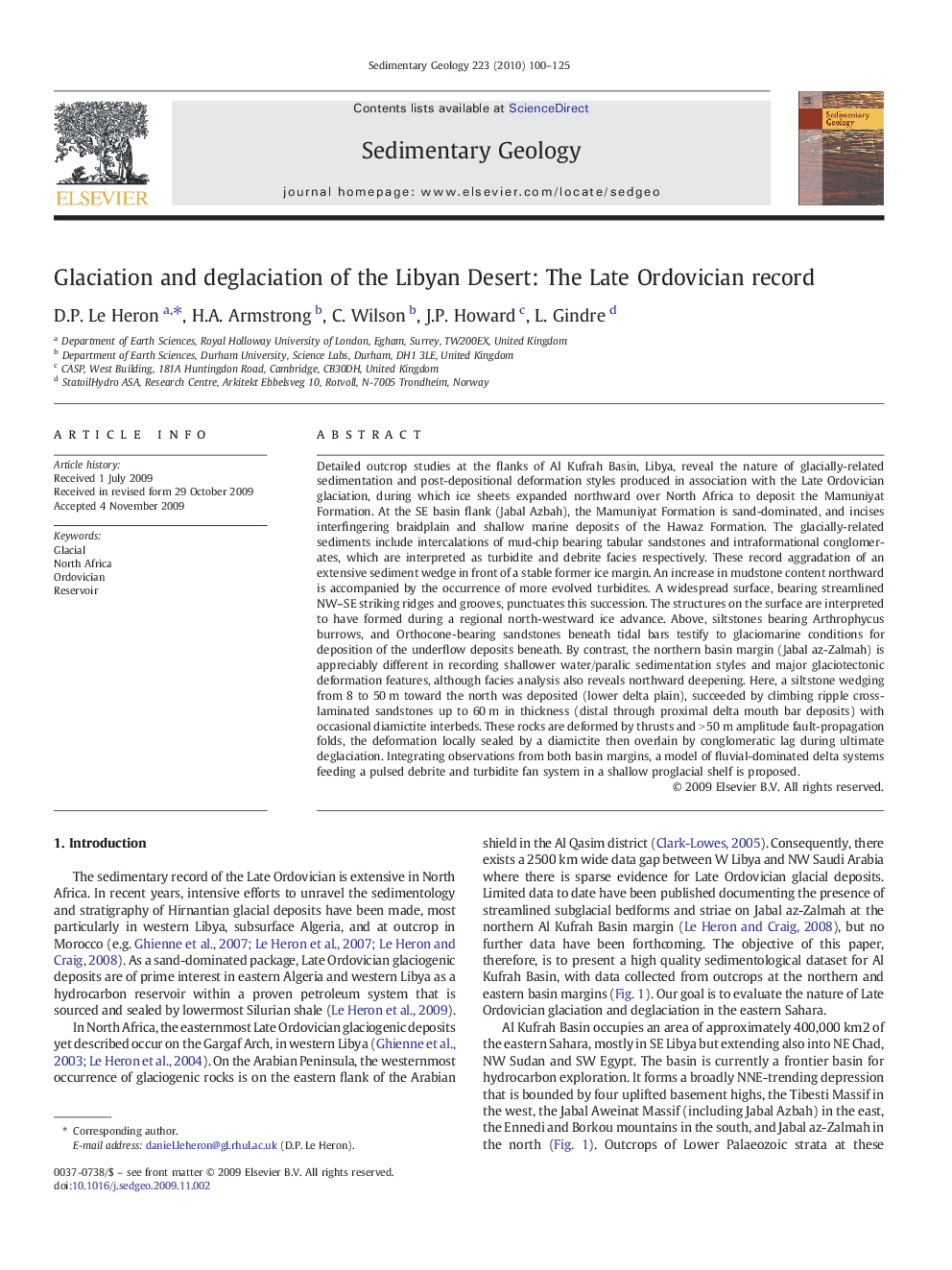| کد مقاله | کد نشریه | سال انتشار | مقاله انگلیسی | نسخه تمام متن |
|---|---|---|---|---|
| 4690346 | 1636131 | 2010 | 26 صفحه PDF | دانلود رایگان |

Detailed outcrop studies at the flanks of Al Kufrah Basin, Libya, reveal the nature of glacially-related sedimentation and post-depositional deformation styles produced in association with the Late Ordovician glaciation, during which ice sheets expanded northward over North Africa to deposit the Mamuniyat Formation. At the SE basin flank (Jabal Azbah), the Mamuniyat Formation is sand-dominated, and incises interfingering braidplain and shallow marine deposits of the Hawaz Formation. The glacially-related sediments include intercalations of mud-chip bearing tabular sandstones and intraformational conglomerates, which are interpreted as turbidite and debrite facies respectively. These record aggradation of an extensive sediment wedge in front of a stable former ice margin. An increase in mudstone content northward is accompanied by the occurrence of more evolved turbidites. A widespread surface, bearing streamlined NW–SE striking ridges and grooves, punctuates this succession. The structures on the surface are interpreted to have formed during a regional north-westward ice advance. Above, siltstones bearing Arthrophycus burrows, and Orthocone-bearing sandstones beneath tidal bars testify to glaciomarine conditions for deposition of the underflow deposits beneath. By contrast, the northern basin margin (Jabal az-Zalmah) is appreciably different in recording shallower water/paralic sedimentation styles and major glaciotectonic deformation features, although facies analysis also reveals northward deepening. Here, a siltstone wedging from 8 to 50 m toward the north was deposited (lower delta plain), succeeded by climbing ripple cross-laminated sandstones up to 60 m in thickness (distal through proximal delta mouth bar deposits) with occasional diamictite interbeds. These rocks are deformed by thrusts and > 50 m amplitude fault-propagation folds, the deformation locally sealed by a diamictite then overlain by conglomeratic lag during ultimate deglaciation. Integrating observations from both basin margins, a model of fluvial-dominated delta systems feeding a pulsed debrite and turbidite fan system in a shallow proglacial shelf is proposed.
Journal: Sedimentary Geology - Volume 223, Issues 1–2, 1 January 2010, Pages 100–125